LAB REPORT
Science and Technology Making Headlines
April 27, 2018

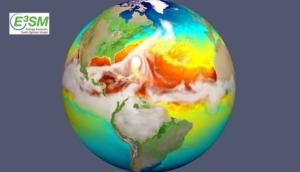
The high-resolution E3SM earth system model simulates the strongest storms with surface winds exceeding 150 mph -- hurricanes that leave cold wakes that are 2 to 4 degrees Celsius cooler than their surroundings. This simulation represents how sea surface temperature changes evolve as a hurricane (seen here approaching the U.S. East Coast) moves across the Atlantic and how the resultant cold wake affects subsequent intensification of the next hurricane.
Earth at the ultimate scale
A new earth modeling system unveiled today will have weather-scale resolution and use advanced computers to simulate aspects of Earth’s variability and anticipate decadal changes that will critically impact the U.S. energy sector in coming years.
After four years of development, the Energy Exascale Earth System Model (E3SM) will be released to the broader scientific community this month. The E3SM project is supported by the Department of Energy's Office of Science in the Biological and Environmental Research Office. The E3SM release will include model code and documentation, as well as output from an initial set of benchmark simulations.
The Earth, with its myriad interactions of atmosphere, oceans, land and ice components, presents an extraordinarily complex system for investigation. Earth system simulation involves solving approximations of physical, chemical and biological governing equations on spatial grids at resolutions that are as fine in scale as computing resources will allow.
"The quality and quantity of observations really makes us constrain the models,” said David Bader, Lawrence Livermore scientist and lead of the E3SM project. “With the new system, we’ll be able to more realistically simulate the present, which gives us more confidence to simulate the future.”

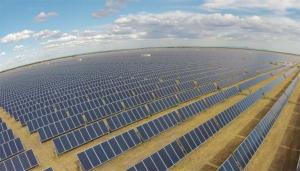
Americans used more solar energy in 2017 compared to 2016.
America turns up solar, wind energy
Americans used more solar and wind energy in 2017 compared to the previous year, according to the most recent energy flow charts released by Lawrence Livermore National Laboratory. Overall, energy consumption by the residential and commercial sectors dropped a bit.
Each year, the Laboratory releases energy flow charts that illustrate the nation's consumption and use of energy. Americans used 0.4 quads (quadrillion BTU) more in 2017 than in 2016. A BTU, or British Thermal Unit, is a unit of measurement for energy; 3,400 BTUs is equivalent to about 1 kilowatt-hour.
Solar energy accounted for 32 percent, driven by strong growth in large-scale installations (major solar farms that generate power for electric utilities -- from .337 to .483 quads, a 43 percent increase) and strong growth in residential installations (small-scale rooftop systems -- from .161 to .192 quads, a 19 percent increase).

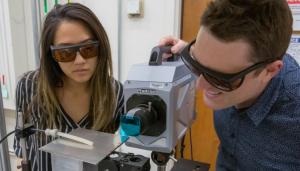
LLNL researchers printed their silicone-based samples using a direct-ink writing process. The composite ink material was extruded at room temperature from the printer’s nozzle to form woodpile-like structures with controlled porosity and architecture.
Moving into the fourth dimension
Scientists at Lawrence Livermore National Laboratory have 3D printed materials that can recover their shape by inserting gas-filled “micro-balloons” into silicon ink. The resulting materials can be compressed and then, when exposed to heat, return to their original state and stay there after cooling off. The materials are flexible and stretchable, with shape memory behavior, which could be used, for instance, to create form-fitting cushioning activated by body heat in a shoe or helmet.
When combined with 3D printing, this shape memory behavior is often referred to as “4D printing,” with the fourth dimension being time.
“The impressive part was how well the structures could recover their shape after they were reheated,” said Amanda Wu, LLNL. “We didn’t see a distorted structure, we saw a fully recovered structure. Because the silicone network is completely crosslinked, it holds the part together, so the structure recovers its original shape in a predictable, repeatable way.”

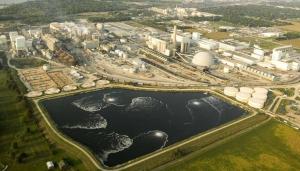
The Illinois Industrial Carbon Capture and Storage (ICCS) project safely and permanently stores more than 1 million tons of carbon dioxide a year. The project captures CO2 from Archer Daniel Midland’s Decatur corn processing facility and stores it almost a mile and a half underground. ICCS is designed to demonstrate carbon capture and storage technology in a saline reservoir at commercial-scale. Image courtesy of Archer Daniel Midland.
Carbon wrangling can be profitable
A new discovery offers hope for cost-effective carbon capture and sequestration (CCS).
To better understand the near-term commercial potential for capturing and storing atmospheric carbon dioxide (CO2), researchers from Lawrence Livermore and their collaborators have mapped out how CO2 might be captured from existing U.S. ethanol biorefineries and permanently stored (or sequestered) underground.
“Proposed modifications to the California Low Carbon Fuel Standard and recent revisions to existing federal tax credits create a substantial near-term opportunity to permanently sequester biogenic CO2,” said LLNL scientist Sean McCoy. “This financial opportunity could not only spur the growth of CCS, but also reduce the lifecycle impacts of biofuels we use today, help fulfill mandates for low-carbon fuels in the U.S. and elsewhere and support development of new carbon-negative fuels.”

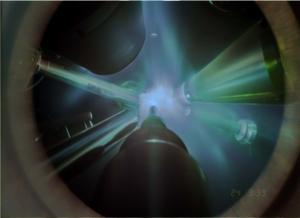
Time-integrated image of a laser-driven shock compression experiment to recreate planetary interior conditions and study the properties of superionic water. Image by M. Millot/E. Kowaluk/J.Wickboldt/LLNL/LLE/NIF
Ice that's hot
Lawrence Livermore scientists have succeeded in creating a type of ice that forms at temperatures that are almost as hot as the sun, and pressures millions of times greater than Earth's atmosphere.
Known as superionic ice, it is believed to form at these extreme temperatures and pressures and melts at an astonishing 8,500°F. For comparison, the surface of the sun is about 9,940°F.
Making the ice was complicated. The team first compressed water into an ultrastrong cubic crystalline ice, with diamond anvil cells applying a pressure 25,000 times Earth’s atmospheric pressure. They used laser beams to heat and compress the cells even more, reaching pressures of 2 million Earth atmospheres.
Superionic ice forms when “oxygen atoms are locked into a crystal structure, but the hydrogen ions move around, making the ice simultaneously solid and liquid, somewhat similar to lava. It’s essentially composed of a fluid of hydrogen ions that run through a lattice of oxygen, and it's thought this unique form of ice could be found naturally inside the ice giants Uranus and Neptune."





